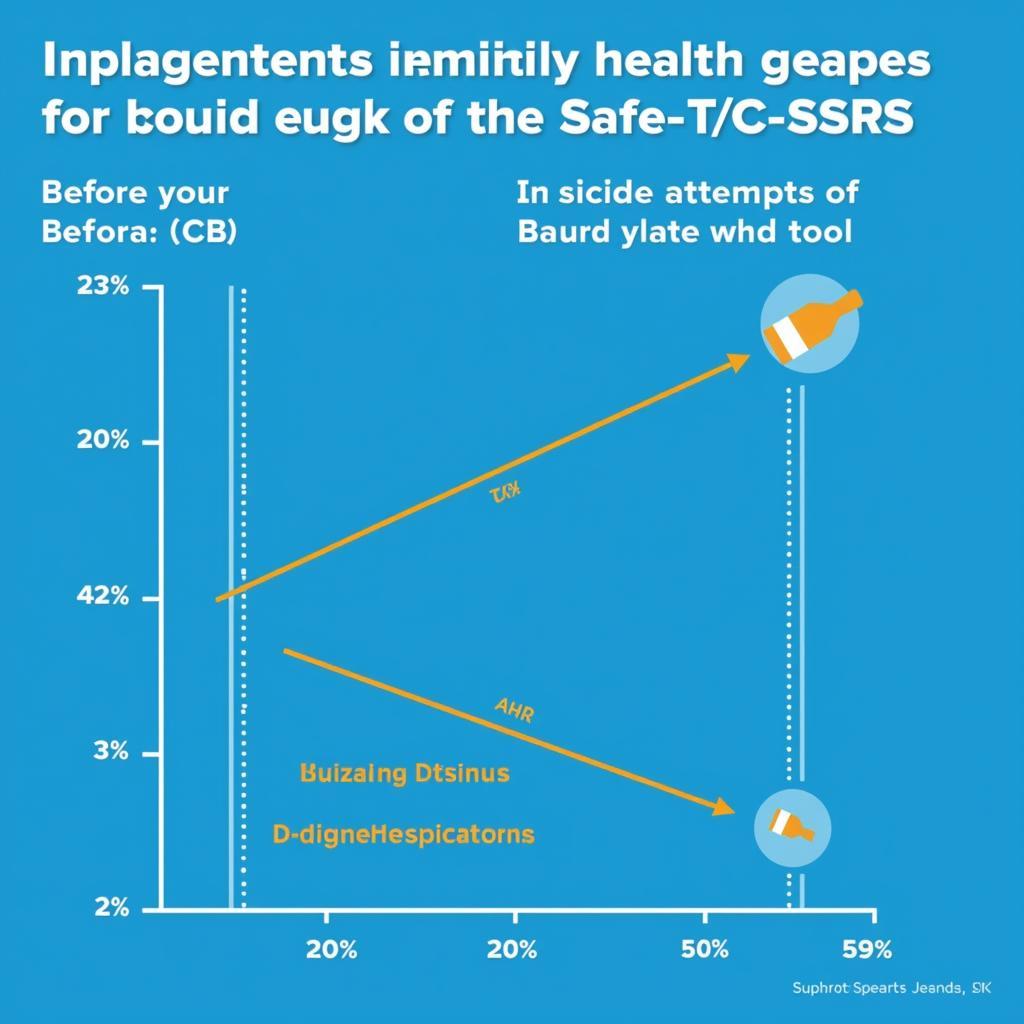The Safe-T/C-SSRS triage tool is revolutionizing psychiatric care and behavioral health assessments. It provides a comprehensive and standardized approach to evaluating suicide risk and identifying mental health needs, offering clinicians a valuable tool for effective intervention and treatment planning. This article dives deep into the Safe-T/C-SSRS, exploring its benefits, applications, and how it contributes to improved patient outcomes in psychiatric care.
Understanding the Safe-T/C-SSRS Triage Tool
The Safe-T/C-SSRS (Suicide Assessment Five-step Evaluation and Triage/Columbia-Suicide Severity Rating Scale) is a combined tool designed to enhance the accuracy and consistency of suicide risk assessments. The Safe-T component provides a structured framework for clinicians, guiding them through a five-step process that includes identifying risk factors, protective factors, and appropriate interventions. The C-SSRS component offers a standardized method for assessing the severity of suicidal ideation and behavior. This combined approach provides a comprehensive picture of an individual’s risk, enabling more informed clinical decisions.
Benefits of Using the Safe-T/C-SSRS in Behavioral Health
The Safe-T/C-SSRS offers several advantages in behavioral health settings. It reduces subjectivity in assessments, ensuring greater consistency and reliability in identifying individuals at risk. This standardized approach helps clinicians make more objective decisions about the level of care needed. Furthermore, the tool facilitates communication among healthcare providers, ensuring everyone involved in a patient’s care has access to the same information and understanding of the individual’s risk. This coordinated approach enhances the overall effectiveness of care and contributes to better patient outcomes.
Improved Patient Outcomes through Standardized Assessment
The structured nature of the Safe-T/C-SSRS helps clinicians identify and address potential risks more effectively. This proactive approach allows for earlier intervention, which can prevent suicidal behaviors and improve patient safety. By providing a clear pathway for assessment and intervention, the tool contributes to reduced hospitalization rates and improved overall patient well-being.
 Improved Patient Outcomes using the Safe-T/C-SSRS Triage Tool
Improved Patient Outcomes using the Safe-T/C-SSRS Triage Tool
Implementing the Safe-T/C-SSRS Triage Tool
Implementing the Safe-T/C-SSRS involves training clinicians on how to use the tool effectively. This training ensures that clinicians can administer the assessment accurately and interpret the results correctly. Ongoing supervision and continuing education are essential for maintaining proficiency and staying updated on best practices in suicide risk assessment.
Training and Resources for Effective Implementation
Various resources are available to support the implementation of the Safe-T/C-SSRS, including online training modules, workshops, and manuals. These resources provide clinicians with the necessary knowledge and skills to utilize the tool effectively and confidently.
“The Safe-T/C-SSRS has significantly improved our ability to assess and manage suicide risk in our patients,” says Dr. Amelia Hernandez, a leading psychiatrist specializing in crisis intervention. “The tool provides a consistent and reliable framework for evaluation, enabling us to make more informed decisions and provide more effective care.”
Addressing the Challenges of Suicide Risk Assessment with Safe-T/C-SSRS
The Safe-T/C-SSRS helps address some of the inherent challenges in suicide risk assessment, such as the difficulty in predicting future behavior and the stigma surrounding mental health issues. By providing a standardized and objective approach, the tool helps mitigate these challenges and improve the accuracy of risk assessment.
“The structured approach of the Safe-T/C-SSRS helps to reduce the emotional burden on clinicians involved in suicide risk assessment,” adds Dr. David Lee, a clinical psychologist with extensive experience in suicide prevention. “The tool empowers clinicians to feel more confident in their assessments and facilitates more effective communication with patients and their families.”
Conclusion
The Safe-T/C-SSRS triage tool is a vital resource for psychiatric care and behavioral health, providing a comprehensive and standardized method for assessing and managing suicide risk. Its structured approach, combined with readily available training resources, empowers clinicians to make more informed decisions, leading to improved patient outcomes and increased safety in behavioral health settings. Implementing the Safe-T/C-SSRS is a crucial step towards enhancing suicide prevention efforts and improving the quality of mental health care.
FAQ
- What is the difference between Safe-T and C-SSRS?
- How long does a Safe-T/C-SSRS assessment take?
- Who can administer the Safe-T/C-SSRS?
- Is the Safe-T/C-SSRS appropriate for all age groups?
- Where can I find training on the Safe-T/C-SSRS?
- How often should a Safe-T/C-SSRS assessment be conducted?
- What are the limitations of the Safe-T/C-SSRS?
Need further assistance with car diagnostics or the Safe-T/C-SSRS? Contact us via WhatsApp: +1(641)206-8880, Email: [email protected], or visit us at 910 Cedar Lane, Chicago, IL 60605, USA. Our 24/7 customer support team is ready to assist you.
